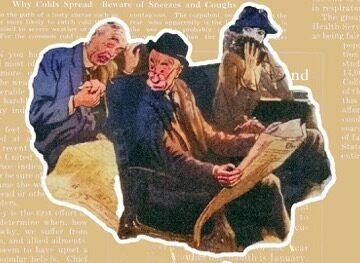
- Publisher: Popular Science
- Editor: Annie Colbert
- Published: April 6, 2025
From my What a Difference a Century Makes—or Not column on Pop Sci
The best advice for avoiding a cold in 2025 isn’t all that different from 1925.
Before germs were first spied under a microscope by Robert Koch, a doctor from East Prussia, catching colds was blamed on evil spirits, foul weather, and medical enigmas such as blood impurities. Koch’s findings ignited the medical community in the late 19th century. Many of humanity’s dreaded afflictions soon had microbial faces of a sort and, more importantly, specific organisms for doctors and scientists to study: The cause of tuberculosis was identified in 1882, cholera in 1883, salmonella and diphtheria in 1884, pneumonia in 1886, and tetanus in 1889. In 1883, Popular Science was among the first publications to forward and promote the emerging and controversial germ theory of disease. Even as some in the medical community resisted mounting evidence for germ theory, the 1880s became known as the golden age of bacteriology. In that same decade...
Why we can't squash the common cold, even after 100 years of studying it
Many thanks to Annie Colbert, Popular Science Editor-in-Chief.
Enjoyed this story? You might like "Why we still don't have a vaccine for the common cold" in Popular Science